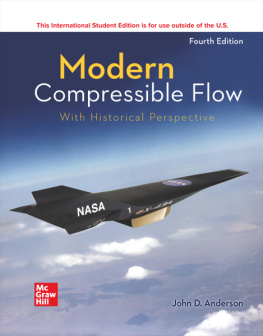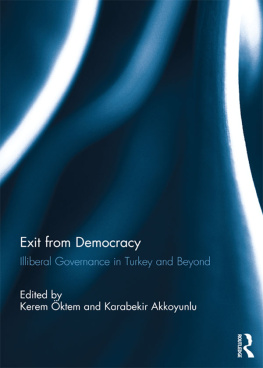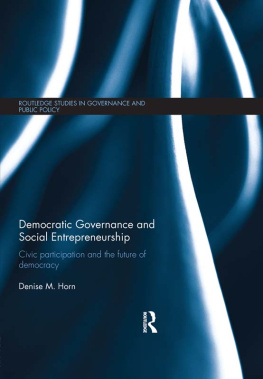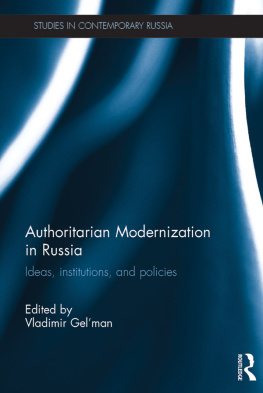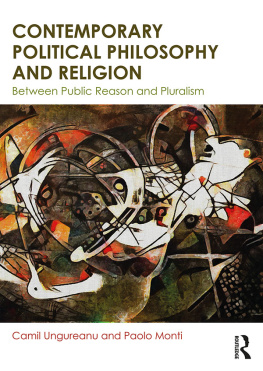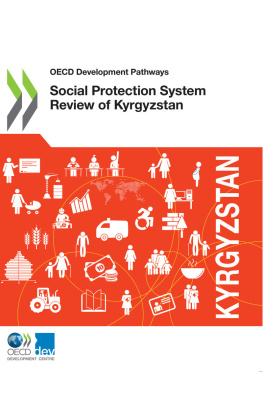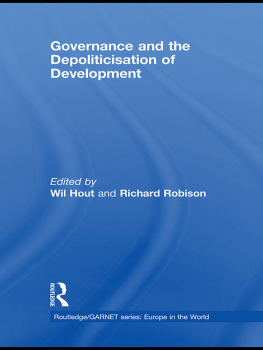Kyrgyzstan
Postcommunist States and Nations
Books in the series
Belarus: a denationalized nation
David R. Marples
Armenia: at the crossroads
Joseph R. Masih and Robert O. Krikorian
Poland: the conquest of history
George Sanford
Kyrgyzstan: central asias island of democracy?
John Anderson
This book is part of a series. The publisher will accept continuation orders which may be cancelled at any time and which provide for automatic billing and shipping of each title in the series upon publication. Please write for details.
Copyright 1999 OPA (Overseas Publishers Association) N.V. Published by
license under the Routledge.
All rights reserved.
No part of this book may be reproduced or utilized in any form or by any means, electronic or mechanical, including photocopying and recording, or by any information storage or retrieval system, without permission in writing from the publisher.
2 Park Square, Milton Park, Abingdon, Oxon, OX14 4RN
270 Madison Ave, New York NY 10016
Transferred to Digital Printing 2007
British Library Cataloguing in Publication Data
Anderson, John
Kyrgyzstan: central Asias island of democracy? (Postcommunist states &
nations; v.4)
1. Kyrgyzstan History 2. Kyrgyzstan Politics and government
3. Kyrgyzstan Economic conditions
I. Title
958.43
ISBN 90-5702-390-3 (softcover)
Publishers Note
The publisher has gone to great lengths to ensure the quality of this reprint but points out that some imperfections in the original may be apparent
FOR MY PARENTS, PETER AND AUDREY ANDERSON, WHO CONSTANTLY SUPPORTED ME IN MY ECCENTRIC INTELLECTUAL PURSUITS, AND IN MEMORY OF JANE ELLIS, WHO TAUGHT ME MUCH AND, FAR MORE IMPORTANTLY, PROVIDED A VOICE FOR SO MANY.
Table of Contents
| 1775 | First Kyrgyz embassy to Russia |
| c. 1830 | Last Kyrgyz tribes accept suzereignty of Kokand |
| 1862 | Kyrgyz soldiers help Russians to take Pishpek |
| 1864 | Birth of Toktogul Saltylganov |
| 1876 | Kyrgyz territory subordinate to Russia |
| 1898 | Andizhan revolt |
| 1916 | Steppe revolt |
| March 1917 | First soviet appears in Kyzyl-Kiia |
| December 1917 | Soviet power established in Talas |
| 1924 | Creation of Kara-Kyrgyz Autonomous Oblast within RSFSR |
| 1927 | Creation of Kyrgyz Autonomous Soviet Socialist Republic |
| 1927 | Khudzhum launched to liberate the women of Central Asia |
| 1936 | Creation of Kyrgyz Soviet Socialist Republic |
| 1938 | Trial and execution of leading Kyrgyz politicians and cultural figures |
| 1961 | Appointment of Turdakun Usubaliev as Kyrgyz first secretary |
| 1985 | Absamat Masaliev appointed first secretary |
| 1989 | Formation of Ashar |
| September 1989 | Adoption of state language law |
| 2 February 1990 | Elections to Supreme Soviet |
| 26 May 1990 | Formation of Democratic Movement of Kyrgyzstan |
| June 1990 | Outbreak of intercommunal violence in southern regions |
| 23 June 1990 | Leaders of Central Asian states meet in Bishkek |
| 28 October 1990 | Askar Akaev elected president of Kyrgyzstan |
| 5 February 1991 | Name of the capital changed from Frunze to Bishkek |
| 13 October 1991 | Akaev elected president unopposed with 95% of the vote |
| 5 May 1993 | Parliament adopts new constitution |
| 10 May 1993 | Kyrgyzstan leaves the rouble zone |
| 14 December 1993 | Apas Jumagalov becomes prime minister |
| 30 January 1994 | Referendum on support for the president |
| June 1994 | Round table conference on Russians in Kyrgyzstan |
| August 1994 | Closure of parliamentary paper Svobodny gory |
| September 1994 | Dissolution of parliament |
| 22 October 1994 | Referendum on constitutional change |
| 5 February 1995 | First round of parliamentary elections |
| 19 February 1995 | Second round of elections |
| 24 December 1995 | Presidential election won by Akaev |
| 10 February 1996 | Constitutional referendum on extending presidential powers |
| September 1996 | Meeting of state Security Council accuses senior officials of financial improprieties |
| January 1997 | Trial of Topchubek Turgunaliev |
| May 1997 | Sentencing of Res Publika journalists |
| July 1997 | Muratbek Imanaliev replaces Roza Otunbaeva as foreign minister |
Kyrgyzstan is a land of contradictions. Though part of Central Asia, its physical aspect is characterised by huge mountain ranges and plentiful water supplies rather than the dry desert sands and periodic drought of popular imagination. To the south west runs the Pamir-Alai range, whilst the northeastern territories are dominated by the snow covered peaks of the Tian Shan mountains. Tucked into the far eastern tip of the country is Victory Peak reaching a height of 7,439 metres, and serving as a useful corrective to a Scottish based writer tempted to boast about the Highlands. These mountains, which have helped to create much of the mythology of Kyrgyz life, also serve to divide the country, with travel between the various regions dependent upon planes, trains through Uzbekistan or hair-raising road journeys via high mountain passes in the care of drivers with no concept of not over-taking on the bend regardless of the drop below.
These mountains, which bifurcate the country geographically, also create political divisions, in particular contributing to tensions between the north and south of the republic. Administratively Kyrgyzstan is made up of six regions: Talas, Chu, Issyk Kul, Naryn, Jalalabad and Osh. The north west is dominated by the Talas and Chu regions, bordering on southern Kazakhstan, whose rivers flow between the mountains, creating valleys with rich agricultural potential which also provide shepherds and their flocks with a refuge during the bitter winter months. Though undistinguished as a town, Talas is the legendary home of the epic hero Manas whose adventures have been recounted in yurts (felt tents) across the country for many decades and whose millennium was formally celebrated by the Kyrgyz state in 1995. Bishkek, the capital of the Chu region and of the republic, is a more attractive if slightly sleepy colonial town where traditional and Soviet architecture meet. Nestling below the mountains, its streets are watered by a network of aryks (irrigation ditches) which keep the air cool and feed the numerous trees which offer shade to the citizens in the heat of summer.
To the east of the Chu valley lies the Issyk Kul region, the approach to which was so vividly described by Eugene Schuyler following his travels through Central Asia in 1873:
Here the banks of the Tchu, as well as of the Kebin, are rocky and precipitous, and the river confined within a narrow space, rushes swiftly by, forming picturesque rapids and cataracts The road crossed and recrossed the torrent, now passing on a cornice through a narrow defile, and again coming out on an open valley, where the stream grew wider and shallower, and where were sometimes small green meadows and clumps of willow The scenery was certainly very grand, but owed its beauty entirely to the mass of bare rock, and to the contrasts in colour observable, some being of a rich reddish purple sandstone conglomerate, and others of black trap with occasional patches of yellow, grey and brown.


